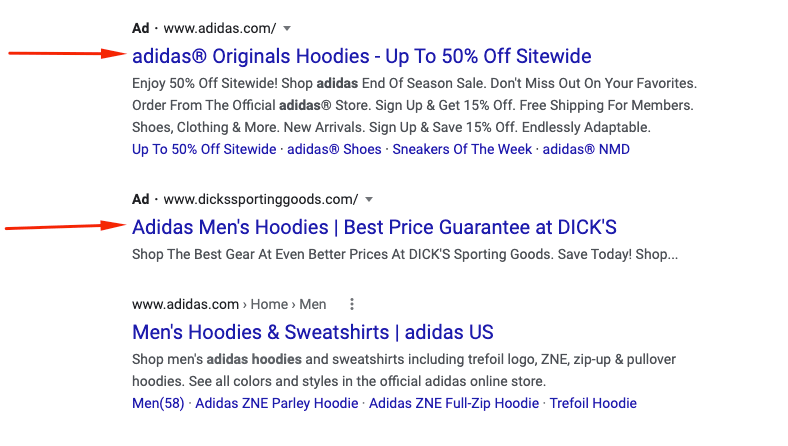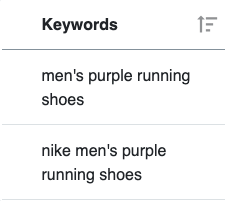Others
SEM 101: The Basics of Search Engine Marketing [Guide]
Here’s a great article from WebFX Blog
Are you looking to have your business appear at the top of search results?
If so, it’s time to invest in search engine marketing (SEM)! SEM is an excellent strategy for helping your business create paid listings at the top of search results that attract qualified leads looking for your products or services.
To help you launch your SEM strategy, we’ve created this SEM 101 guide to enable you to learn everything you need to know about SEM, including answers to questions like:
- What is SEM?
- What’s the difference between SEM and SEO?
- Why should my business use SEM?
- How do I do SEM?
Keep reading to learn more!
For even more digital marketing advice, sign up for the email that more than 190,000 other marketers trust: Revenue Weekly.
SEM 101: What is SEM?
SEM, or search engine marketing, is a strategy that involves running paid and targeted ads that appear on search engines. These ads appear at the top of search results above the organic listings.

SEM 101: What’s the difference between SEM and SEO?
When you look at the basics of SEM, you may wonder how this strategy is different from a strategy like search engine optimization (SEO). Since both strategies involve trying to get your business to rank in the search results, it can seem like they’re the same.
However, these two strategies differ significantly. Here’s how:
- SEO is an organic strategy, while SEM is a paid strategy
- SEO takes time to show results, while SEM shows immediate results
- SEO is a free way to have your listings in search, while SEM involves paying to have your ads appear in search
Essentially, SEO is the organic way to get your business to appear at the top of search results, while SEM involves paying money to show ads higher in search.
SEM 101: Why should my business use SEM?
As we look at the basics of SEM, you may be wondering why you should spend the time learning search engine marketing 101. How does this strategy benefit your business?
Next in this SEM 101 guide, let’s look at five benefits to advertising on search engines:
1. You see immediate results
One of the most significant benefits of search engine marketing is you see immediate results. When you run other strategies like SEO, you have to wait to see results.
With SEM, you can see immediate results. As soon as you launch your ad, you can start tracking your campaign and see if it drives the outcome you desire.
When you can track immediate results, you can make quick changes. If you’re doing SEM for a couple of months and find that certain ads aren’t driving clicks, you can reoptimize those ads or redirect your strategy to help you drive better results.
2. You get your business at the top of search results
One of the biggest benefits of SEM is that your business appears at the top of search results. When users conduct searches, they tend to click on the top-ranking listings. In fact, 46% of page clicks go to the top three paid ads in search.
SEM puts your business at the top of search results, which means more clicks from interested prospects.
Not to mention, even if prospects don’t click on your ads, they still get exposed to your brand. Search engine marketing is excellent for building brand recognition, leading to more sales down the line.
3. You drive more qualified leads
When you learn about SEM basics, you’ll find that it’s one of the best strategies for driving more qualified leads for your business.
SEM involves targeting precise keywords, known as long-tail keywords, to help your ads appear in relevant search results. For example, if you’re selling shoes, you may target a keyword like “Men’s purple running sneakers.”

Since this keyword is specific, you know that people who search it are looking for what you offer. These prospects are more likely to click on your ad and see what purple sneakers you have.
Because you target these precise keywords, you’re reaching more qualified leads for your business.
4. You have control over your budget
One of the biggest benefits of search engine marketing is that you have control over your budget. The most basic fact of SEM 101 is that you don’t need a certain spend amount to run paid ads. You will run ads based on how much you’re willing to spend.
Now, it’s important to note that how much you’re willing to spend impacts the success of your campaigns. Investing $500 into a campaign probably won’t drive the same results as investing $2000.
The important part, though, is that you have control over how much you want to spend. It gives you the power to determine what works with your budget.
5. You earn more conversions
The most valuable thing you’ll learn from this SEM 101 guide is that SEM helps you earn more conversions. PPC has an average return on investment (ROI) of $8 for every $1 spent.
Since PPC ads target specific keywords, you can reach more qualified leads. Since you’re reaching more qualified leads, you’re driving traffic that’s more likely to convert. By delivering a tailored ad experience, you can help nudge these leads towards conversion.
As a result, you earn more conversions for your business and increase your company’s revenue.
SEM 101: How do I do SEM?
Next in the basics of SEM, let’s look at how you can get started with search engine marketing 101.
Here are three key components to doing SEM:
1. Identify relevant keywords for your ads
One of the most critical SEM basics is to identify relevant keywords for your ads. As mentioned earlier, keywords trigger your ad to appear in relevant search results. If you want your ads to appear in front of relevant leads, you must find the correct terms.
You can use a keyword research tool like KeywordsFX to help you find the right terms for your ads. When you conduct keyword research, focus on long-tail keywords, which contain three or more words.

For example, if you run an ad for your purple sneakers, a great long-tail keyword is something like “men’s purple running sneakers.”
When you find the right keywords, you can move on to setting your bid.
2. Bid on your keywords
A key component of SEM is bidding on keywords. If you want your ads to appear in search results, you need to bid on your keywords.
Some keyword research tools will provide you with an average cost per click (CPC) for your keywords. This information can help you see the average amount people pay to have someone click on their ad for that keyword.
How much you bid will depend upon the keyword and competition. You may need to bid higher for specific keywords because there are more competitors for them.
You’ll need to do some research to figure out how much you want to bid for your keywords. As you run your campaigns, you may need to adjust your bid based on ad performance.
3. Create your ad copy
The last part of the SEM basics we’ll look at is creating ad copy. Your ad copy is what your audience sees in the search results. It’s critical for determining whether prospects click or keep scrolling.
When you craft your ad copy, make sure you use your core keyword in it. You’ll also want to make sure your ad copy is relevant to the keyword you target.
For example, if you target “purple running sneakers,” you wouldn’t have ad copy that talks about your brown flats.
When you craft ad copy, use ad extensions. Ad extensions allow you to post more information through your ads that get more people to click.

From sitelink extensions to structured snippet extensions, you can take your ads to the next level by using these extensions.
By creating relevant ad copy, you’ll entice more people to click on your ads and drive better results with your SEM!
SEM 101: Partnering with SEM experts
When you’re busy running your business, SEM is a big undertaking. Instead of trying to figure it out all on your own, consider partnering with an SEM expert like WebFX. We have a team of over 300 marketing experts ready to help your business build a successful campaign.
Our team of experts knows how to craft campaigns that drive results. In the past five years, we’ve driven over $2.4 billion in revenue and over 6.3 million leads for our clients. You can feel confident we’ll craft a strategy that drives the results you desire.
Ready to launch your SEM campaign? Contact us online or call us today at 888-601-5359 to speak with a strategist about our SEM services!
The post SEM 101: The Basics of Search Engine Marketing [Guide] appeared first on WebFX Blog.
